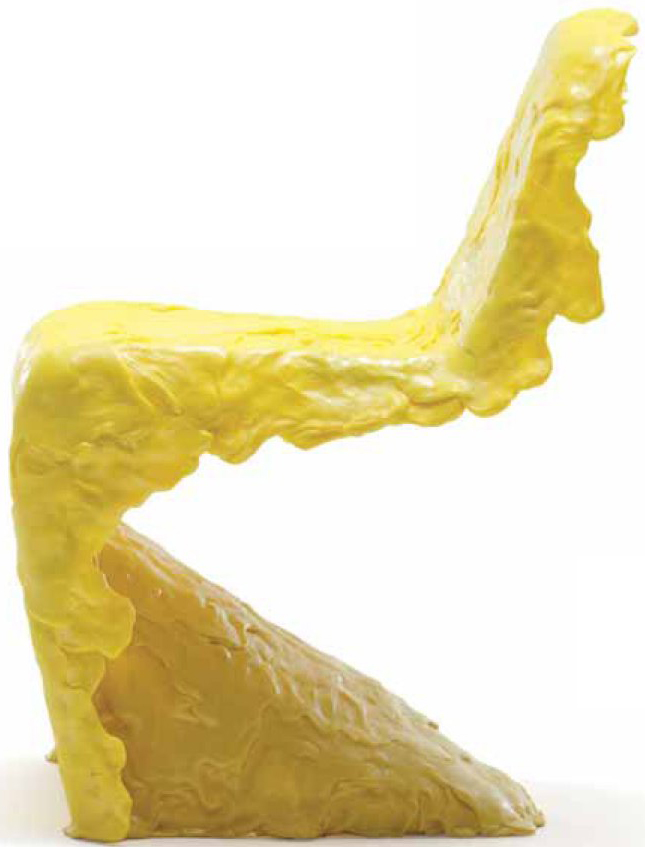Polycaprolactones are a range of thermoforming plastics that have some wonderfully surprising characteristics. In a sense, their range of properties contrast with many of the traditional preconceptions about plastics: first, that most plastics require high heat and pressure to form; that they require expensive steel tooling to shape; that they are not biodegradable; and that they are not compatible with use inside the body. Polycaprolactones, however, are a group of plastics that are more of a sensorial and indulgent material, a characteristic that is primarily based on its melting temperature, which is much lower than for other plastics. This quality gives polycaprolactones a personality closer to a lump of children’s plasticine than a material of mass-production.
It is this low melting temperature that is its most noteworthy feature. Melting at between 58–60ºC (140ºF) means that polycaprolactones melt in a cup of hot water from a kettle, forming a soft, gum-like plastic that can easily be pulled, stretched and shaped. When it cools and returns to room temperature it can be machined, drilled and cut until it is put back into hot water when it can be re-melted. As a result it’s a plastic that has found a home in both the classroom and in the factory. This material takes plastic to a completely new venue; a place where it can be formed by hand in a manner that is closer to cooking than anything else in the world of mass-production.
Image: Amateur Masters Chairs by Jerszy Seymour

Key features
•Forms at low temperatures
•Non-toxic
•Biodegradable
•Easily adheres to other materials
•Excellent strength
•Good abrasion resistance
•Good UV resistance
•Recyclable
Sources
Widely available.
Cost
£4-5 ($6.20-7.80) per kg.
Sustainability issues
There are two advantages to this plastic in relation to the environment. The first is the low melting temperature, which means it is less energy intensive when processing, and secondly, it is biodegradable.
Production
Polycaprolactones take the form of granules or powders and can be processed using standard thermoplastic methods: injection moulding, extrusion and calendering to produce films. It can also be used as an adhesive. Its most notable characteristic is its low melting temperature, which allows it to be formed by hand once the granules have been melted in boiling water. This quality allows for thick and solid wall sections to be made, something that is generally hard to do in injection moulding. It can also be machined with standard cutting tools once it has hardened at room temperature.
Polycaprolactones have been combined with PET in seatbelt fibres to enhance cushioning and flexibility, they have also been successfully used for making garbage bags in Korea, and as an adhesive it has been used in shoe sole bonding, laminated packaging and for bonding textiles. Its low melting temperature and ease of forming eans that it has replaced traditional plaster in medical applications for splints or dental impressions, allowing for softened sheets of the material to be formed around a broken bone. It can also be calendered as a film for use in direct-contact food packaging, and used for making prototypes, formers for vacuum forming and moulds for casting.
Derivatives
–InstaMorph®
–ShapeLock®
–PolyMorph®
–Plastimake®
–Protoplast®
| + | – |
|
–Very easy to form at low temperatures –Biodegradable –Excellent strength and resistance –Recyclable |
–Derived from crude oil, so not from a renewable resource |
